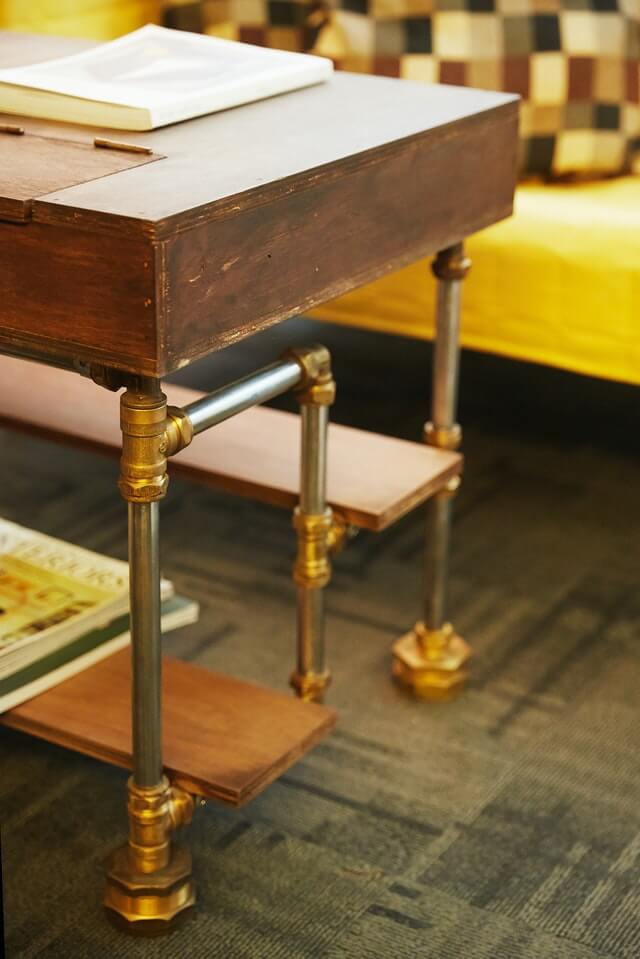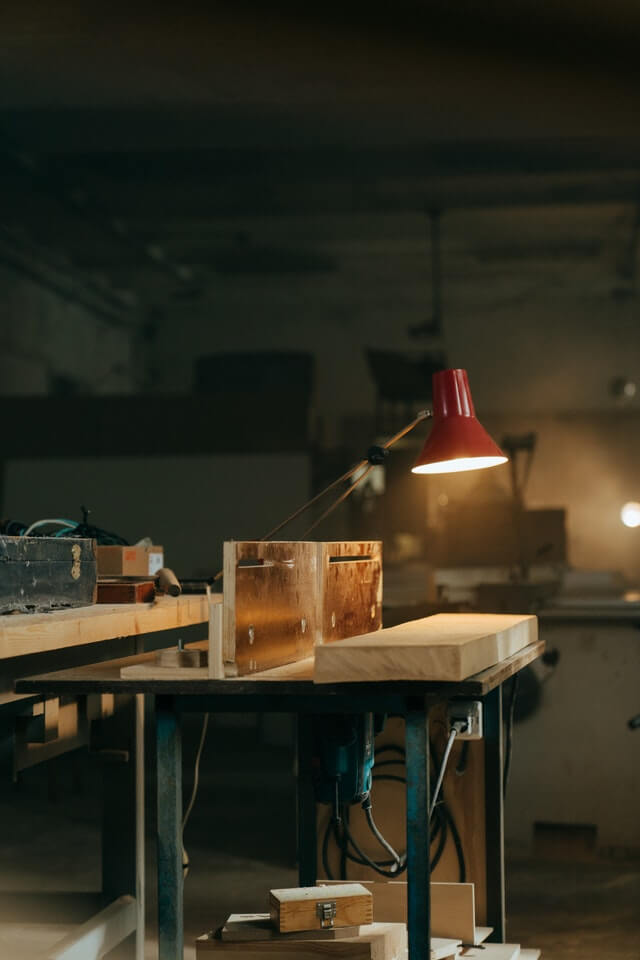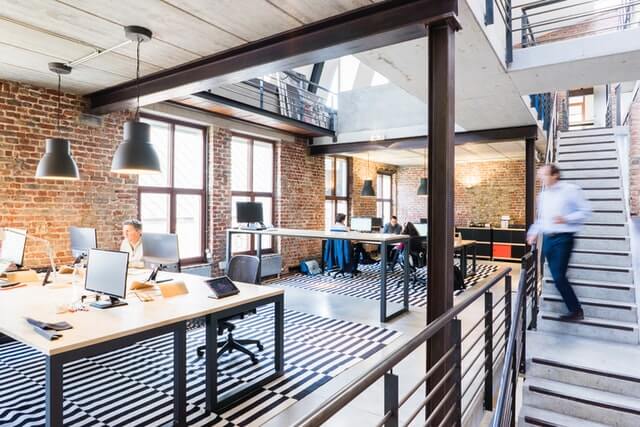

The popularity of the industrial style is on the rise, both in a home setting and in an office setting. With the current impact of the global pandemic, this now also applies to the ever-rising number of home offices that are popping up in our daily lives.
If you like a rough and unfinished look with a lot of metal, wood, concrete, and other rustic ideas, then an industrial home office might just be the thing for you.
Before we start breaking it down into smaller pieces, let’s look at industrial style as a whole. What is it? What does it look like? Why do we like it?
The underlying theme of an industrial style is raw, unaltered, bare-bones. Think about face brick, exposed pipes, concrete walls, rustic wood and metal, seemingly naked building elements that would usually be plastered over or buried under something softer and more refined.
The feeling that it creates is about the same as old black and white photos of factories.
This style has become popular within an office because it speaks of industry. As a result, less money is spent on refining building structures, and more is spent on integrating the raw and exposed with the aesthetically pleasing and functional.
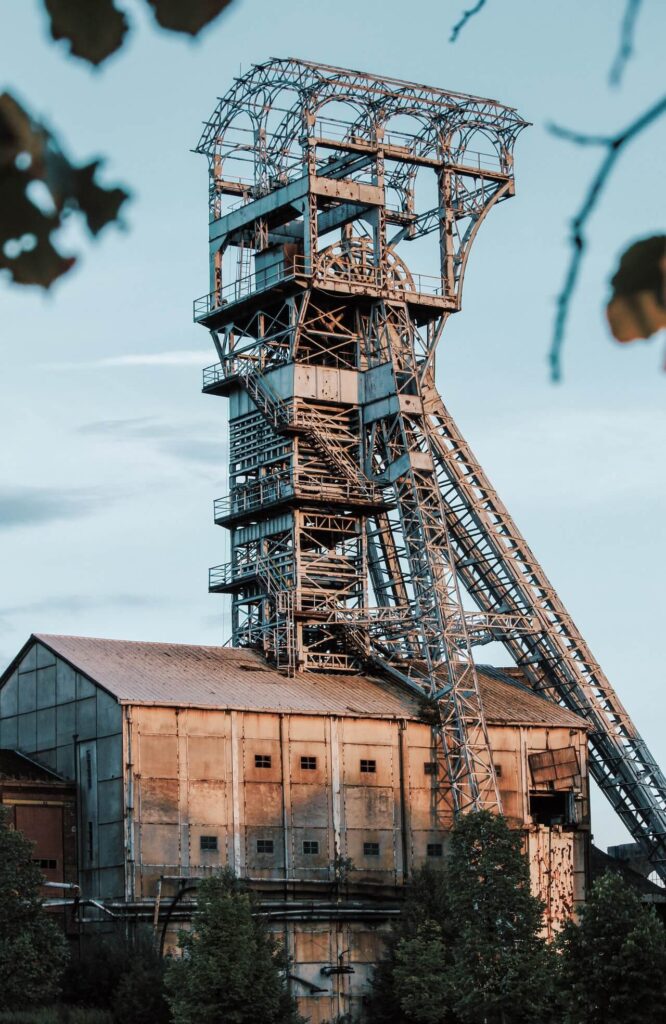
We begin with the architecture, the bones of the bare bones, so to speak.
It is often reasonably easily identifiable even to an untrained eye. The four main underpinnings of this style are: large open spaces, minimalism, exposed structural and functional elements, and large degrees of natural lighting.
To oversimplify, if you can imagine an abandoned semi dismantled factory, you can probably tell when a building is built in the industrial style.
Industrial interiors sometimes create the impression of being unfinished, and although that might seem like a bad thing at first, if it is done right, it creates a space for us to explore, a place to find inspiration.
The goal of interior design when it comes to an industrial-style home office is to combine structural elements that are already there with fixtures and furniture that together will create a conducive image that showcases industrial design ideas. The final product should be aesthetic and functional.
There should be a balance between the naked exteriors of the building and the apparent interior requirements for industrial home offices.
Desk space is critical in an office space. We need to decide how much desk space we need and plan to fulfill this requirement. Industrial office furniture often allows for a reasonably large desk that is the focus of the space. It is prevalent within an industrial office to see a desk with some metal elements.
Metal pieces are often combined with rustic wood or glass. Plastic is rare and not an excellent choice for a desk in an industrial house or office. Remember that the desk is the space where you create, the space where you spend a significant part of your life. It is an essential piece of art to add to any collection.
Therefore, we must also make sure that the desk’s materials will stand the test of time. Luckily the industrial home office style lends itself to durability. Metal and strong wood pieces are common. Sturdiness is a welcome design component for the industrial home office.
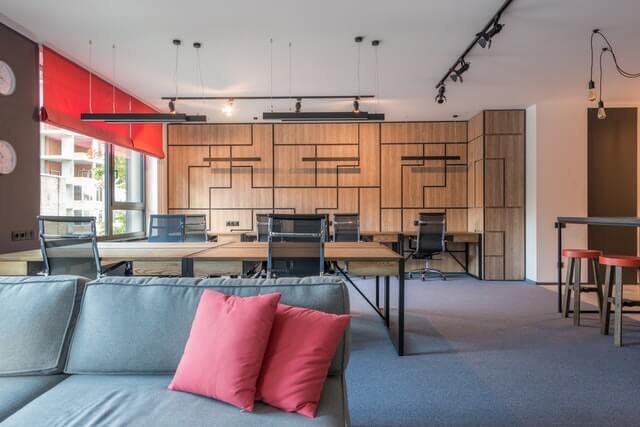
Chairs are essential office equipment that needs to be comfortable and supportive enough to sustain long hours of use. Even in home offices, we need appropriate office chairs to complement the décor and still serve its functional purposes.
Office chairs are just as crucial as desks in an industrial style home office. It is as much a piece of decor as it can be a piece of interest and needs to be a piece of functionality. Again, strong materials like metal are common. Industrial home offices also encourage a step away from the dull and traditional office chair and promote something a bit more adventurous for your home office.
One of the four underpinnings of industrial style is natural lighting. So when considering an industrial-style home office, you will need to bear in mind that natural light is necessary to achieve the overall feel of the industrial-style interior design.
Contemporary styles can be incorporated with an industrial style to bring in more elegant and artificial light should we feel it necessary. But if we want to stick to an industrial style quite rigidly, we need to make sure that enough natural lighting is incorporated into our space.
When adding additional lighting to your industrial home office, it is helpful to remember that with the industrial design style, we can incorporate more naked light than would be appropriate in a contemporary design. For example, metal fixtures on a concrete wall are pretty popular.
Storage is essential to the minimalist quality of an industrial office. We need to have sufficient storage to avoid any visible clutter entirely. This is true for a private office as it is for a home office. And it should be noted that a home office has a bigger problem with storage than private offices would. Much of personal office storage is often done off-site and managed by external companies specializing in archiving or external storage. When you are working entirely from a home office, then storage becomes your responsibility, and such services are not readily avoidable on small scales. So you might need to get creative within your home office to ensure sufficient and secure storage.
Industrial home office designs will involve quite a bit of shelving, making the storage problem a little easier. Still, we need to balance storing things on these shelves and maintaining both securities of sensitive information and the aesthetic requirement of openness and lack of clutter.
Open storage is typical in an industrial home office. Usually, most of a wall or even the entire one wall can be dedicated to open metal shelves. Unfortunately, this creates a lot of storage room and runs the risk of having a cluttered appearance.
Closed storage can take the shape, especially in a home office setting, as built in cupboards along one wall. It is easy to include a built in wall cupboard into the overall decor of a home office. The inclusion of built in wall cupboards in an industrial home office simplifies the problem of a cluttered look as these cupboards will have doors that can help hide clutter. The doors can then become a design component that quickly becomes part of the decor.
It will also allow us to store sensitive things more securely.
